Foster + Partners and Nissan unveil vision for self-charging driverless cars that can power the home
Geneva Motor Show 2016: architecture firm Foster + Partners and auto brand Nissan have combined technologies including wireless charging, autonomous driving and battery storage to present a proposal for the future of vehicles and cities (+ movie).
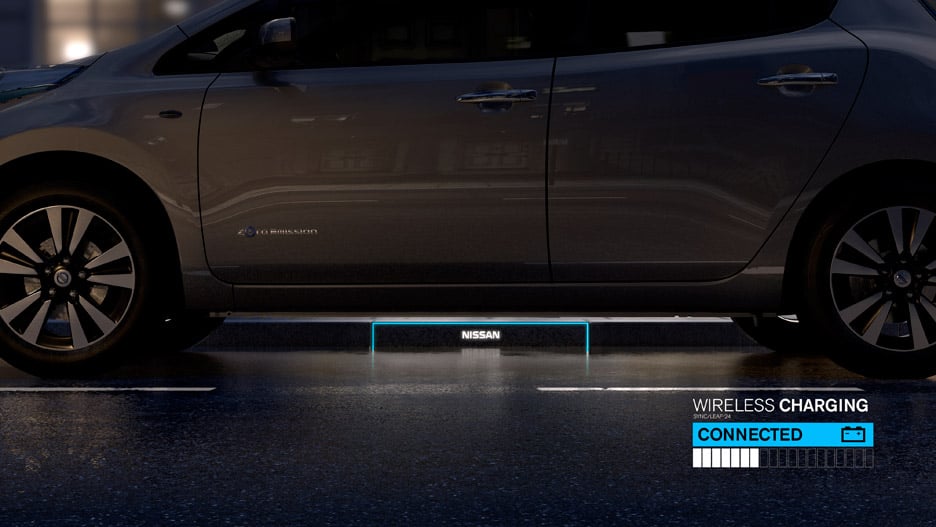
Presented at the International Motor Show in Geneva this week, the proposal concludes the companies' year-long project to redesign electric car fuel stations.
But instead of a physical station, Nissan and Foster suggest that the cars themselves could be used to store and distribute renewable energy along a "smart street".
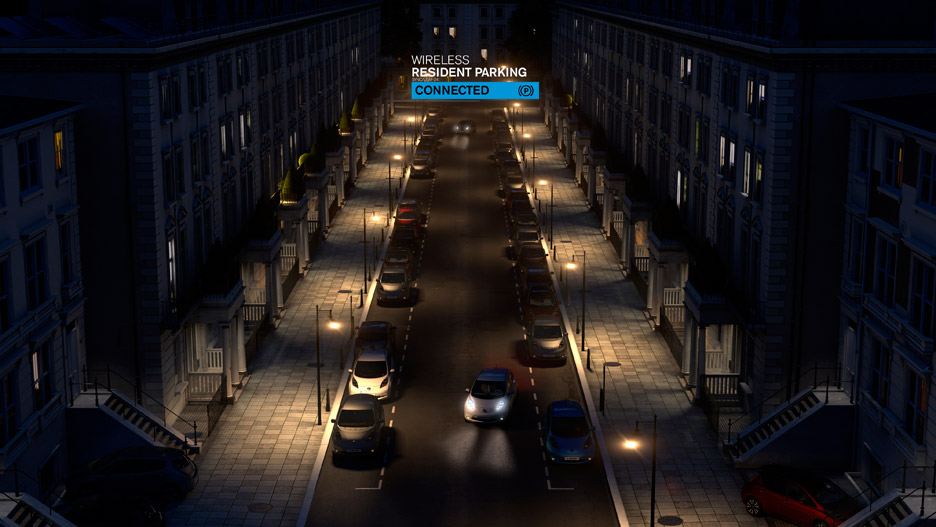
Nissan's fully electric Leaf vehicle is used to demonstrate this Intelligent Mobility concept developed with Foster + Partners in a two-minute movie released to coincide with the Geneva event.
The Japanese car company is already trialling a vehicle-to-grid system in Europe, which could allow cars to operate as individual "energy hubs" able to store, use or return clean energy to the grid.
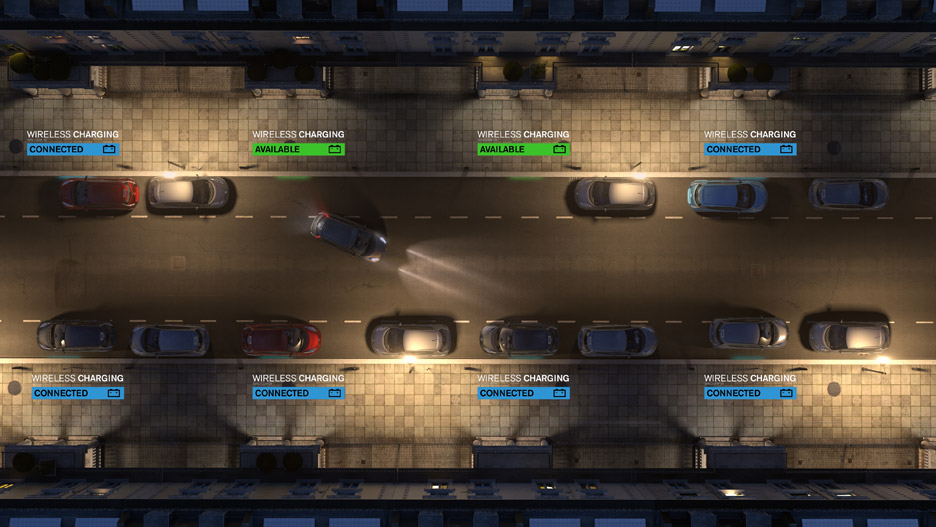
The video shows a further development of this idea, with cars connecting to an underground electricity grid wirelessly through points in the road surface of parking spaces. This power would be generated from a combination of solar, wind and wave sources.
The cars would park themselves into the bays to charge overnight, and automatically swap with other vehicles when fully powered.
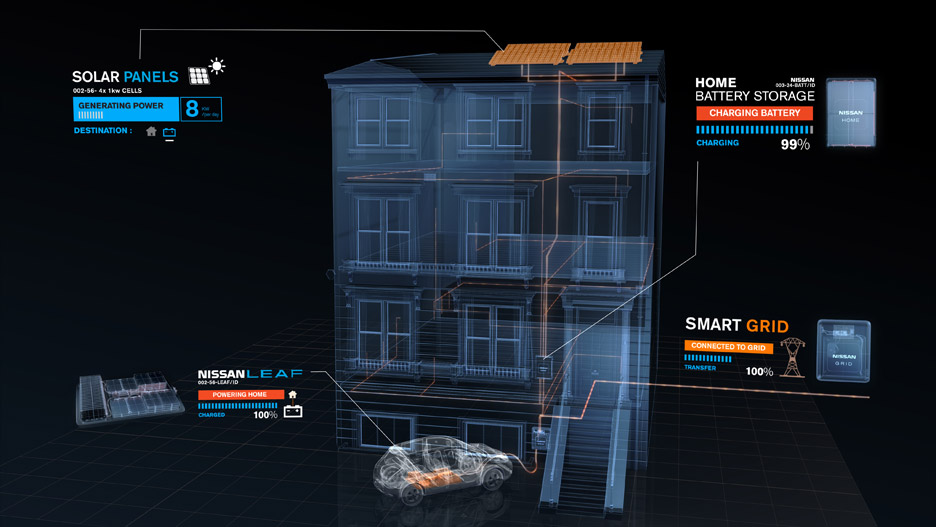
Come morning, the car would be wired up to its owner's house to provide electricity from the battery for powering lighting and appliances.
Recycled Leaf batteries could also be installed in the home to store more energy.
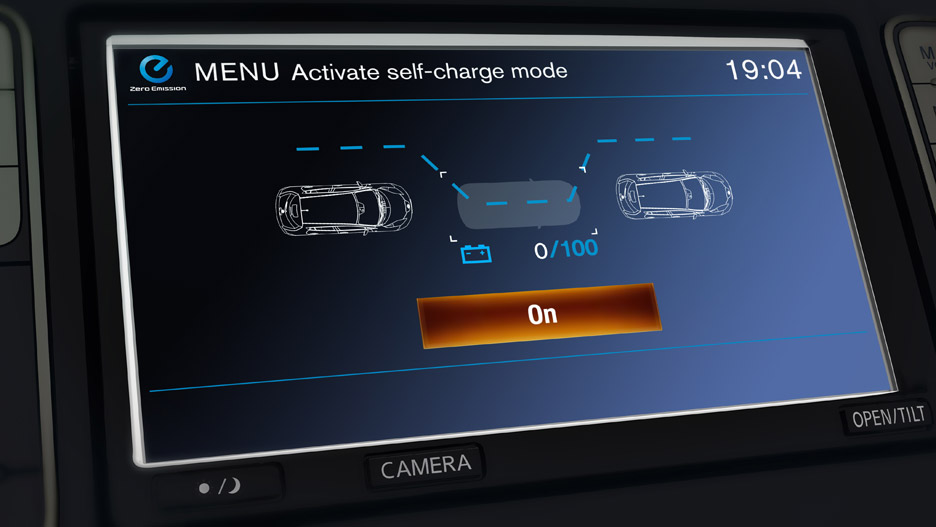
The cars could also drive straight into offices, where an automated parking system would transport the vehicle to charging bays within the buildings during the day.
Nissan's Nismo smartwatch, first launched in 2013, could inform drivers when their car is fully charged.
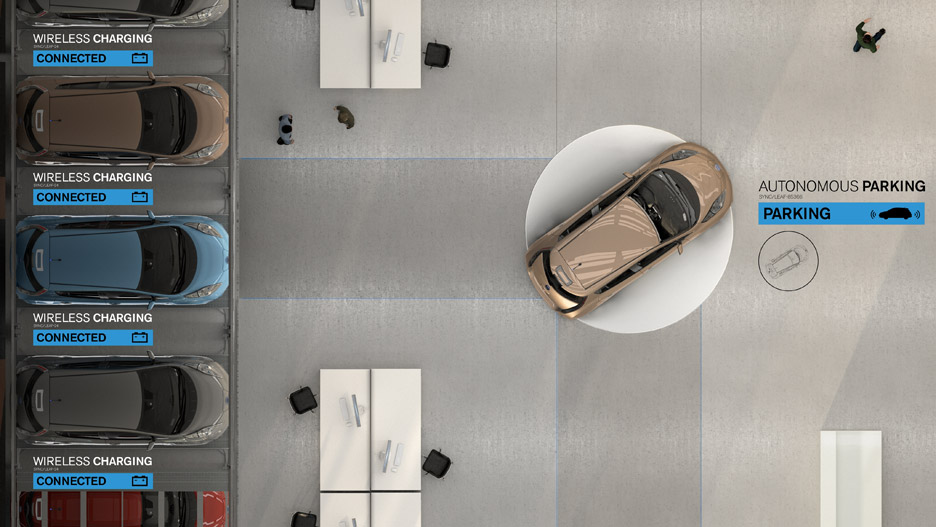
"Integrating zero emission technologies into the built environment is vital in creating smarter, more sustainable cities," said David Nelson, co-head of design at Foster + Partners. "That commitment must extend far beyond the car – it must sit at the heart of everything we do."
If the system was implemented, defunct car parks and fuel stations could be replaced by green spaces.
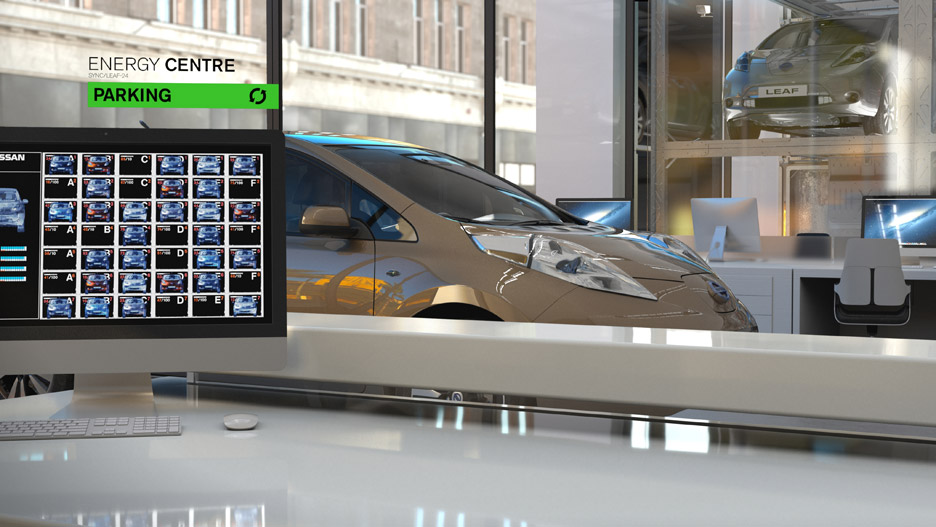
Nissan stated that by 2050, seven out of every 10 people will live in urban areas, and predicted that almost all global energy needs could be met with renewable energy by this point.
Therefore, improved infrastructure for both cars and renewable energy systems needs to exist to support this, said Nissan.
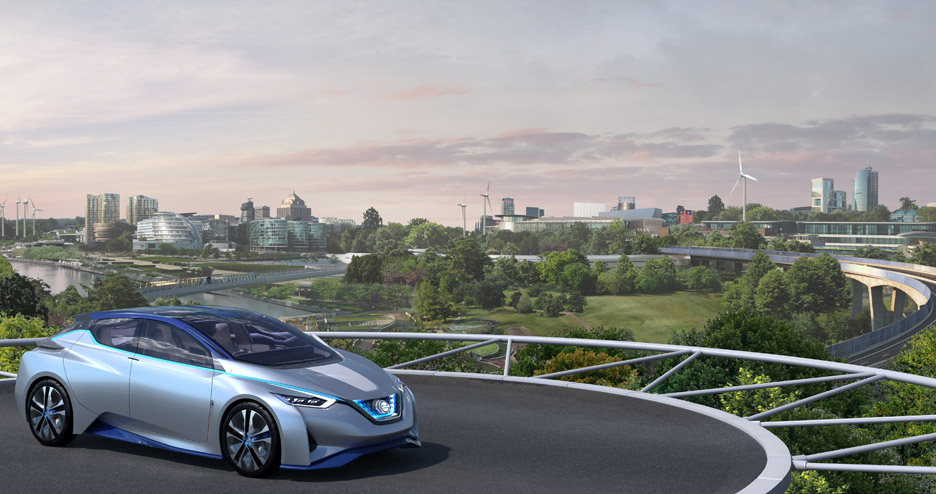
"Technology holds many of the answers for the challenges we face in our cities today," said Nissan Europe chairman Paul Willcox. "However, the true power comes when those technologies are integrated with each other and the world around us."
Foster + Partners – the London-based firm led by architect Norman Foster – has previously unveiled a variety of futuristic transport proposals.
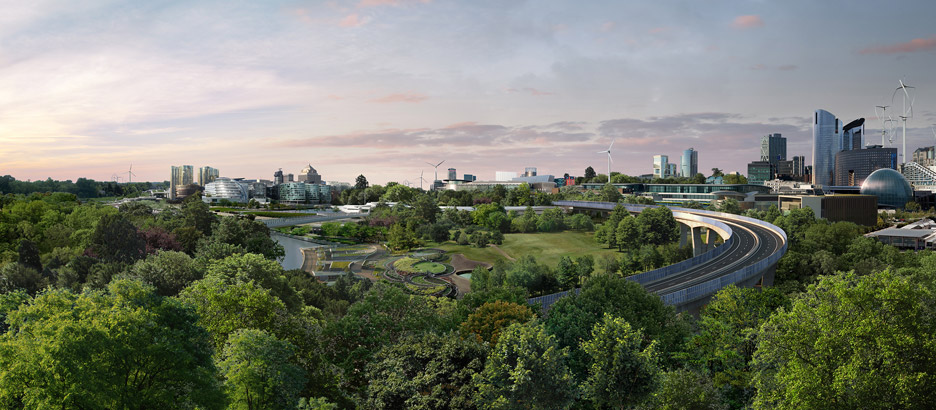
Last year, the studio revealed plans for a drone port in Rwanda that could be used to deliver urgent medical supplies and was appointed to design an £8-billion transport system for Jeddah, Saudi Arabia.
In 2014, it revealed a concept to build a network of elevated pathways above London's railways to create safe car-free cycling routes.